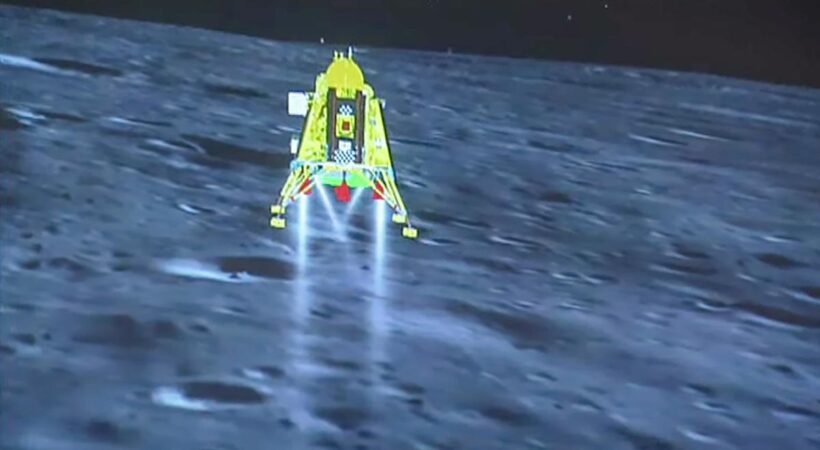Unveiling Chandrayaan-3’s Choice: Why Land at the Moon’s South Pole?

The precise landing of Chandrayaan-3’s Vikram lander, approaching the moon’s South Pole, marks a significant advancement in lunar exploration. While it remained within the moon’s “near side,” this mission ventured remarkably close to the lunar South Pole, enhancing the prospects of scientific discovery and resource investigation. To comprehend the rationale behind this approach, let’s delve into the concepts of the moon’s near and far sides, dispelling the myth of a “dark side.”
The moon’s near side encompasses approximately 60% of its surface that is perpetually visible from Earth. This unique configuration results from the moon’s synchronous rotation, with its rotational period matching its orbital period around Earth. It’s important to note that the term “dark side” is a misnomer; the moon’s far side, while not visible from Earth, receives ample sunlight during the “new moon” phase. The Soviet spacecraft Luna 3’s iconic 1959 images unveiled the enigmatic far side, previously obscured from human view. Subsequently, the Apollo 8 mission in 1968 allowed astronauts to witness the far side firsthand.
A stark contrast distinguishes the moon’s two hemispheres. The near side boasts smoother terrain, punctuated by extensive volcanic plains known as “maria.” In contrast, the far side presents colossal craters, likely arising from ancient asteroid impacts. This divergence arises from differences in crust thickness; the near side’s thinner crust facilitated the spread of volcanic lava, gradually concealing craters and forming the flat plains advantageous for space missions.
Chandrayaan-3’s defining characteristic lies in its calculated landing proximity to the lunar South Pole. Positioned at coordinates 69.36°S and 32.34°E, approximately 600 km from the South Pole, the Vikram lander’s placement aligns with a “permanently shadowed region.” This area, devoid of direct sunlight, increases the potential of encountering frozen water-ice and valuable deposits, offering insights into the moon’s composition and potential resources. While Vikram’s landing site wasn’t in total darkness—sunlight was necessary to power the lander and rover—it strategically balanced scientific objectives with energy requirements.
Crucially, Chandrayaan-3’s decision to land on the near side, despite the unique allure of the far side, stems from mission necessities. The near side enables direct communication with Earth, a pivotal aspect for real-time updates and control. Unlike the Chinese Chang’e 4 mission, which successfully landed on the far side, Chandrayaan-3 prioritized consistent line-of-sight communication with Earth, eliminating the need for relay mechanisms that would introduce time delays.
In essence, the Chandrayaan-3 mission showcases a meticulously considered approach to lunar exploration. By tactically situating the Vikram lander closer to the moon’s South Pole on the near side, Indian Space Research Organisation (ISRO) scientists aimed to maximize scientific revelations while ensuring operational feasibility. This mission underscores that landing locations are meticulously chosen to align with a mission’s broader objectives, highlighting the intricate dance between scientific curiosity and technical constraints in the realm of space exploration.















